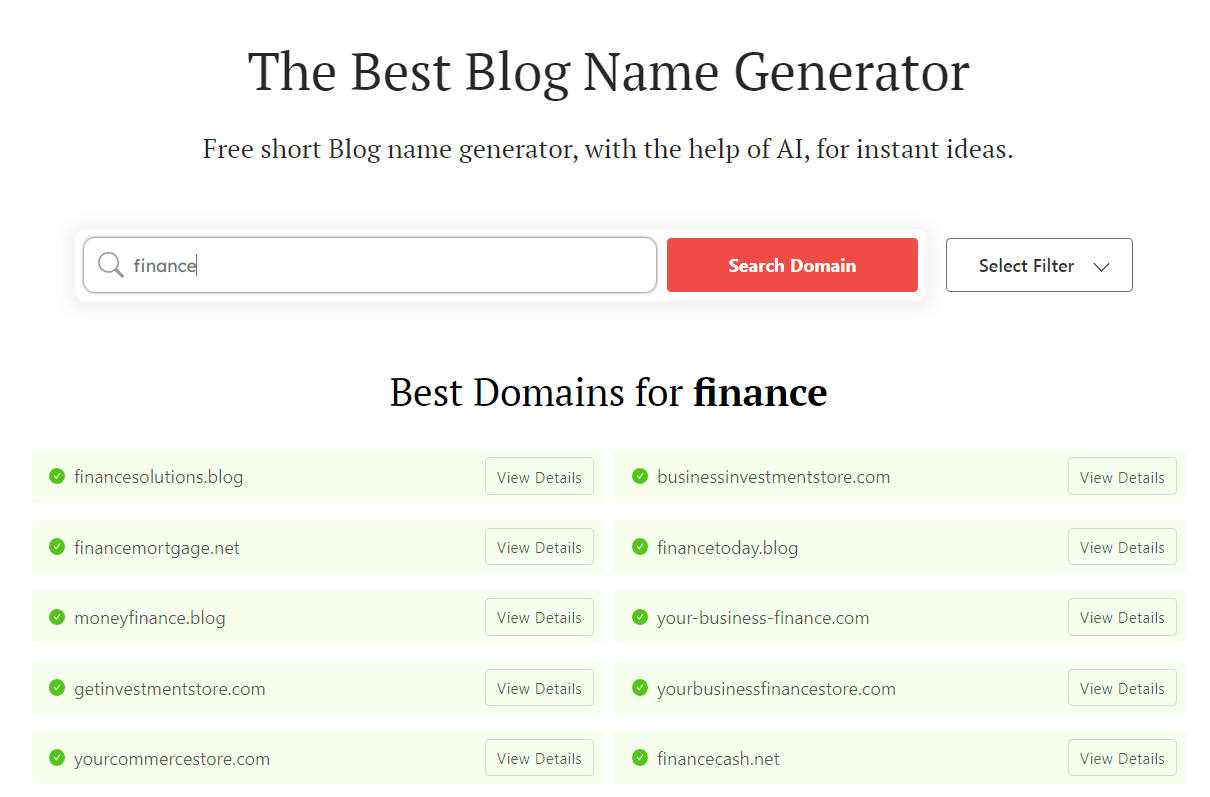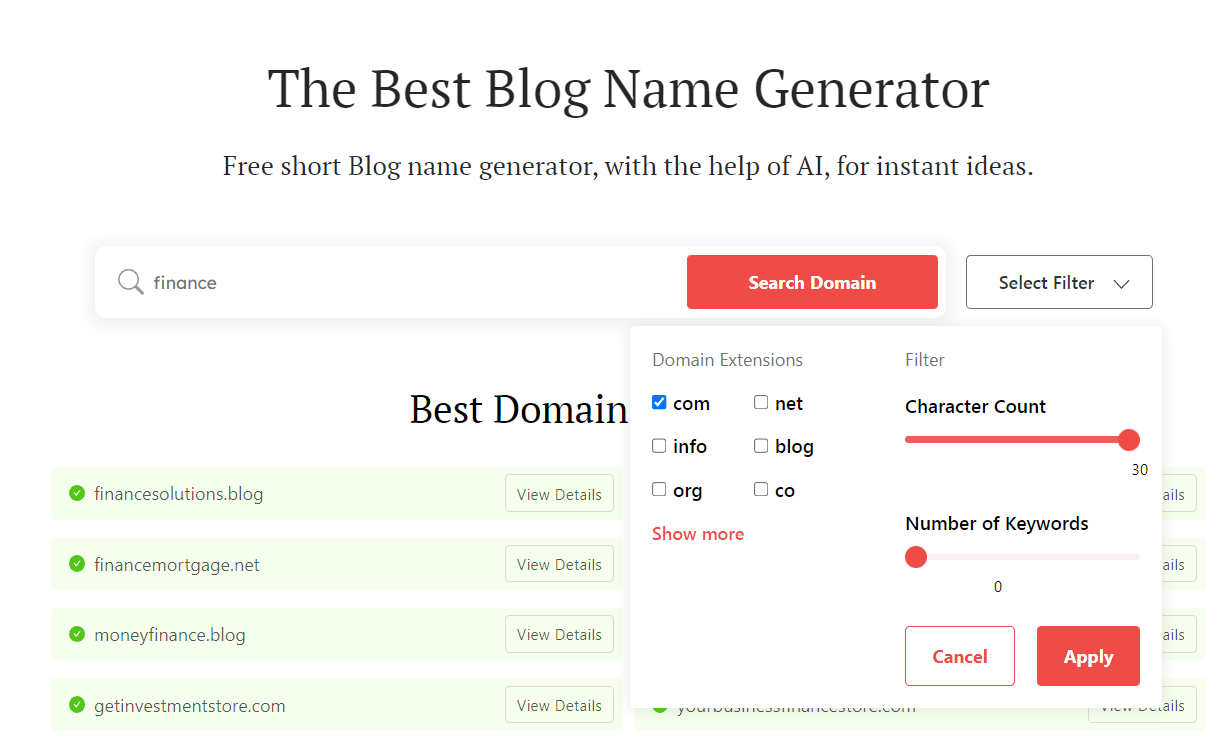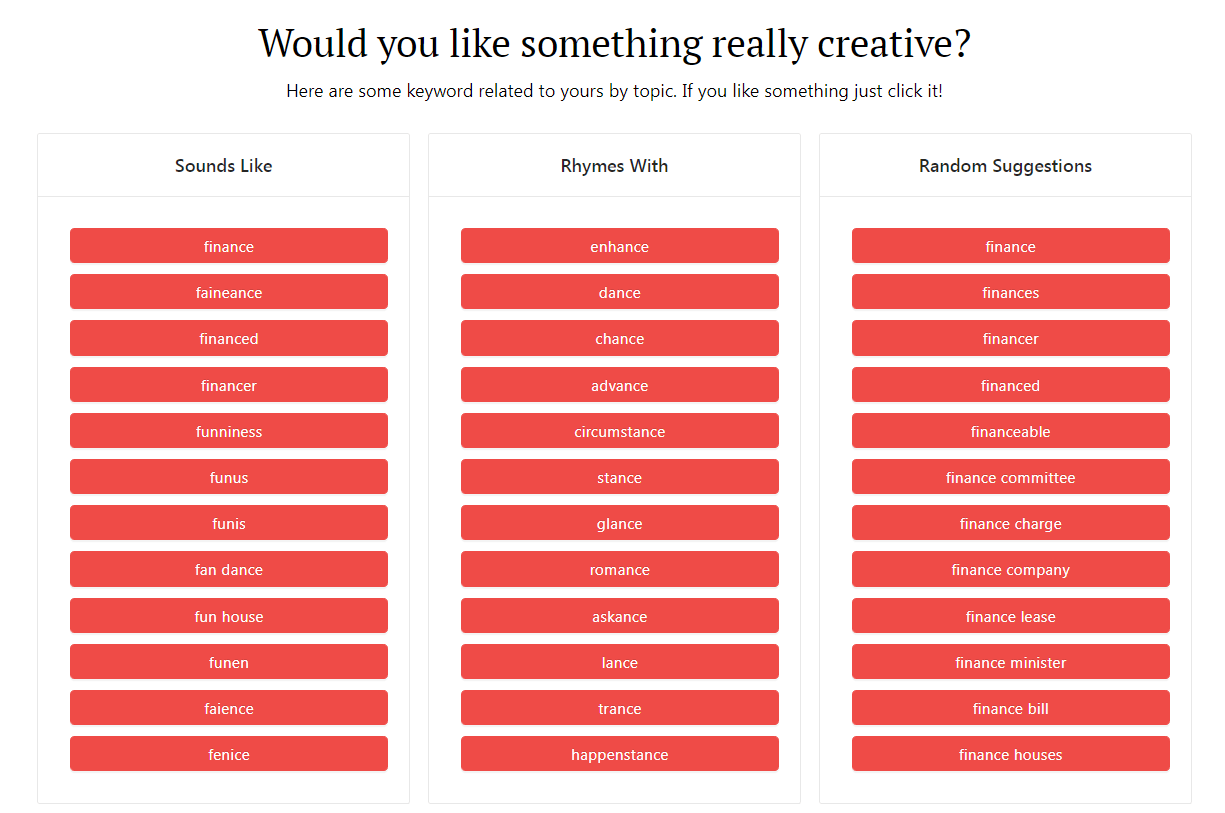A blog can be a great way to share your passions with the world, connect with other people, and even make some money. But there are a lot of decisions to make before you start publishing articles. This guide on how to choose a blog name will help you find the perfect domain name for your blog.
First, we’ll look at what makes a good blog name. Then we’ll provide six key strategies for how to choose a blog name. And, at the very end, we’ll share some next steps for getting your blog set up, so make sure to keep reading!
What makes a good blog name?
💡 A good blog name meets three key criteria:
1. It’s relevant to your brand
The best blog names are directly related to the niche they publish in. For example, MakeALivingWriting.com is an excellent blog name because it tells you exactly what the website is about: learning how to make a living from your writing.

2. It factors in search engine optimization (SEO)
One of the most important factors in the long-term success of a blog is SEO or search engine optimization, and it starts with your blog name. This makes it important to use popular keywords related to your niche.
A great example of this is the Content Marketing Institute, which includes the keyword “content marketing”. This helps search engines understand what the site is about and makes it more likely to appear in the top search results when someone searches for the phrase “content marketing”.
While these types of keyword “exact match” domains are less important than they once were, they’re still a great way to provide Google with context about your site.

3. It’s short and simple
Another key thing to consider in how to choose a blog name is how easy it is for people to remember your domain name. You want something that’s easy to type into a URL bar or a Google search. You also want it to be easy to pronounce so that people can recommend your company in everyday conversation.
To make sure your website is easy to find, use a domain name that is spelled the way it sounds and contains less than five words.
A great example of a blog that uses these principles is TechCrunch. This blog name uses two simple words that total up to 9 letters. And it manages to fit an essential keyword, “Tech”, into those nine letters.

What shouldn’t you do? Well, consider One Step 4Ward, a popular travel blog. The founder regrets that he always has to explain that his domain name is onestep4ward.com and not onestepforward.com. A good domain name should avoid these types of confusing substitutions.
💡 Check out our article on registering a domain name with numbers for all the dos and don’ts of using a number in your domain. For an even more comprehensive overview take a look at our full guide on selecting a domain name.
How to choose a blog name in six steps
- Consider your niche
- Define your audience
- Reference your writing style
- Consider your perspective
- Use a blog name generator
- Check the availability of your blog name
1. Consider your niche
The first thing you’ll want to consider is the niche your business falls into. You can figure this out by asking yourself a few questions:
- What is the general category you want your blog to fall into? This is the broadest possible description of your niche, like “health” or “finance”.
- What aspects of this niche do you want to focus on? For example, you might want to focus on “healthy diet” or “personal finance”. You might even get more specific by choosing something like “plant-based diet” or “getting out of debt”.
- Do you want to leave room to branch out in the future? It’s important to consider where you might want to take your blog in the future. For example, you might want to start a finance blog by talking about how to get out of debt and expand it later to include advice about things like saving for retirement. In this instance, it might make sense to use a keyword like “finance” that can be relevant to more types of content than a keyword like “debt”.
Once you’ve settled on your niche, you can brainstorm keywords related to it. I recommend setting a timer for 3-5 minutes and listing as many relevant words as possible. You’ll use this list in step five!
2. Define your audience
The next thing to consider in how to choose a domain name is your target audience, the people you most want to have reading your blog.
There are a couple of ways you can use your blog name to appeal to a specific audience:
- Reference their unique needs or desires. For example, if you’re creating a food blog for people who have a gluten intolerance, you might use a phrase like “gluten free” in your blog name.
- Use language that appeals to their sensibilities. For example, if you’re building a blog for people who read a lot, you might include a phrase like “bookworm” in your blog name.
You’ll also want to make sure to avoid any slang your audience won’t understand. This means that there are some words you can use to name a blog targeted at Gen Z that won’t work for a blog aimed at baby boomers.
3. Reference your writing style
Another thing you can do with your blog name is to hint at your writing style. This might be tricky if you’re new to blogging and haven’t figured out your style yet, but there are still some general words you can use to describe the overall feel of your writing:
- Brief is a great word to use if you want to publish short, frequent blog posts.
- Academic is a great word to use if you plan to write longer, more academic articles with properly cited research.
- Rambles can be effective if you’re going to publish longer articles with minimal structure.
You can also use words related to the emotional tone of your writing. For example, if you’re writing a humor blog you might want to include words like “comedy” or “joke”. On the other hand, if your tone will be more informative, you can include a word like “advice”.
4. Consider your perspective
The next thing you’ll want to consider when choosing a blog name is your own perspective.
There are a few things to ask yourself here:
- Do you have any relevant professional or educational qualifications? For example, if you’re a licensed therapist and you’re writing a blog about mental health, you might want to include a reference to your profession.
- Are you sharing a personal journey? For example, if you’re planning to blog about your quest to eat healthier, you might choose something like “My Health Food Journey”.
- What unique perspective do you bring to this topic? For example, if you have ADHD and you want to write about productivity for others with ADHD, you might choose something like “An ADHDer’s Guide To Productivity”.
The important thing here is that your perspective should be combined with niche-relevant keywords to ensure that potential visitors get an idea of both who you are and what you’re going to write about.
5. Use a blog name generator
The next step in how to choose a blog name is to use a blog name generator like DomainWheel. All you need to do is type in a keyword or phrase and click Search Domain to instantly generate dozens of ideas.
Here’s an example of the suggestions for “finance”:

DomainWheel automatically checks for the availability of all name ideas, so you’ll only see blog names that are currently available. You can also click Select Filter and choose to filter your results based on specific domain extensions, making it easy to find a .com or other popular TLD.

If you don’t find the perfect blog name right away, scroll down to find three other categories of name ideas: Sounds Like, Rhymes With, and Random Suggestions. You can click on any of the words listed here to launch a whole new search.

Best of all, this tool is 100% free, so you can run as many searches as you need to. 😎
6. Check the availability of your blog name
The final step in how to choose a blog name is to make sure that the name you want is available everywhere you’ll want to use it.
The DomainWheel blog name generator automatically checks for domain availability, but this isn’t the only type of availability you’ll want to consider.
It’s also important to check availability on social media platforms, as these are essential marketing tools for your business. Moreover, if someone else is using your name on social media platforms, people might get confused and think they represent your brand when they don’t.
You can easily check availability on a variety of social media platforms using Namecheckr.
You’ll also want to make sure that the name you’re using isn’t trademarked, as using a trademarked name can lead to expensive legal battles and even force you to do a full rebrand or shut down your business. You can figure this out by searching the USPTO Trademark Database.
Final advice on how to choose a blog name
There are many things to consider when learning how to choose a blog name. You want something that will tell potential visitors what your site is about right away while also being optimized for SEO and easy to remember.
To find the perfect blog name, consider your niche, your audience, your writing style, and the unique perspective that you bring to the topic you plan to cover. You can then run relevant words through the DomainWheel blog name generator to get unique name suggestions. Just be sure to check that the name you want isn’t trademarked or already taken on social media!
Now that you know how to choose a blog name, it’s time for the next 🚀 steps: registering your domain, choosing a web host, and starting your blog.

